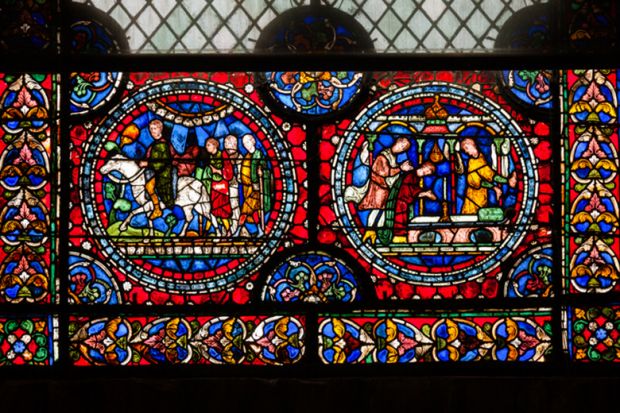Chaucer is something of a conundrum for a literary biographer. He worked much of his life in the service of the crown, so there is a body of documentary evidence about his professional career. We know how much was paid in ransom for his release (£16) when he was taken prisoner in France in 1360, as well as the fact that he was accused of “raptus” (which may be rape) in 1380 and that he was robbed on a highway in Deptford a decade later. And yet few, if any, manuscripts of his work date from his lifetime. Several of his texts are unfinished. To add to the complexity, Chaucer left “no diaries, no letters”, as Marion Turner reminds us, nothing that might give us a sense of his interior landscape. Her new biography therefore tells the story of his life and work through the spaces and places he knew. The result is a rich, thought-provoking and readable work of scholarship.
These spaces and places are both real and abstract: there are chapters on Hainault and Navarre, but also “Tower”, “Empire” and “Milky Way”. Turner has an eye, ear and nose for detail. She conjures the Vintry ward, where Chaucer grew up, as a place where pigs snuffle in streets filled with offal, dung and blood, where incense wafted from churches and pepperers sold spices. It was “spectacular, cosmopolitan, filthy, smelly, banal, beautiful, violent, and changeable”, which reads rather like a summary of Chaucer’s oeuvre.
Vintry had the most immigrants of all the London wards and it was here that Chaucer learned Italian, which served him well in his diplomatic career, but would also transform “not only…[his] own poetry but English literature”. Turner is clear throughout: the father of English literature was a European to his core.
Her reading is forensic. When treating the documentary evidence, she makes a little go a long way, but always judiciously. She focuses long-overdue attention on Chaucer’s daughter, Elizabeth, who was a nun at St Helen’s Bishopsgate. She notes that Chaucer lived only a third of a mile from Elizabeth and it was customary for the nuns there to receive visitors. We are allowed to imagine Chaucer making the five-minute walk to see his daughter. These suggested snapshots are precious. Apart from the dedication in the Treatise on the Astrolabe to “Lyte Lowys my sone”, we have little sense of Chaucer’s family life.
Turner’s forensic reading is at its best when she scrutinises literary texts. With lightness of touch she draws the reader’s attention to tricolons and superlatives, to rhyme and metre, but also situates works within their larger social contexts – this is especially effective in pulling out the political resonances in Troilus and Criseyde and the enigmatic dream visions.
The work moves inexorably towards the Canterbury Tales. Its chapters are grouped into three sections – Becoming, Being and finally Approaching Canterbury. It is here, on the way to Canterbury – Turner argues – that we see Chaucer “forging a new kind of poetry”. And Turner too has forged a new kind of biography – for Chaucer, at least. Her work promises to be definitive for some time to come.
Mary Wellesley is a British Library research affiliate. Her book, Manuscripts That Made Us, is under contract with Quercus.
Chaucer: A European Life
By Marion Turner
Princeton University Press
624pp, £30.00
ISBN 9780691160092
Published 17 April 2019
后记
Print headline: Cosmopolitan, filthy, beautiful




